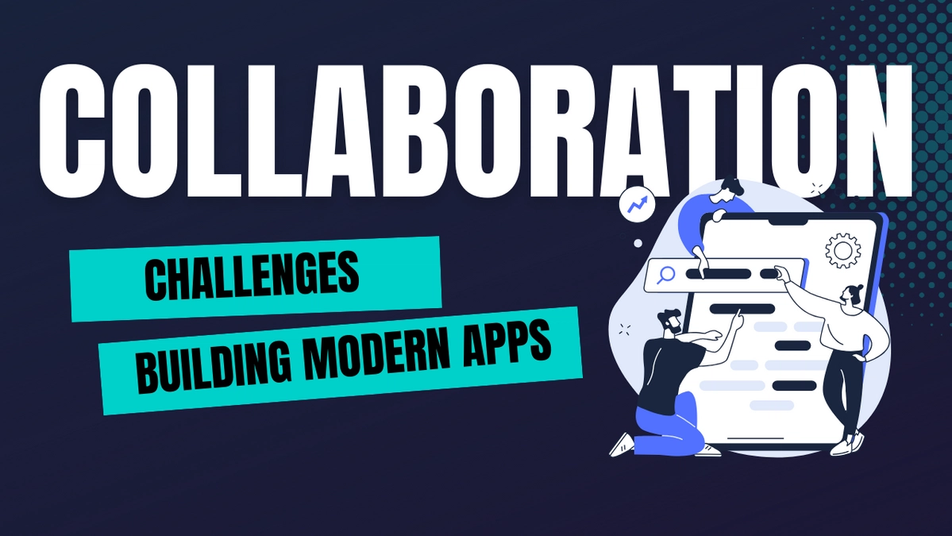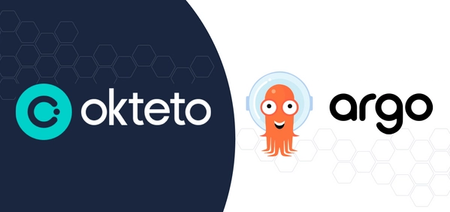How Developers Can Seamlessly Collaborate When Building Microservice Apps

Okteto Features (8 Part Series)
- Developing Microservices by Hot Reloading on Kubernetes Clusters
- Four Reasons You Need Preview Environments
- Bring Any Cloud Resource to Your Modern App Dev Workflow
- The Modern Way of Sharing Dev Work With Your Team
- The Way You're Using Kubernetes Clusters During Development Is Killing Productivity!
- Slash Your Kubernetes Costs During Development
- How Developers Can Seamlessly Collaborate When Building Microservice Apps
- Simplifying Launching Development Environments With Okteto Catalog
Building microservices based applications is inherently challenging. Given the multitude of components involved, it is unrealistic to expect any individual to possess comprehensive knowledge of all the different technology stacks. Therefore, collaboration with other team members becomes absolutely essential. However, this collaboration is not always straightforward either. In this article, we will delve into the common issues that teams encounter when developing cloud-native applications with a distributed microservices architecture, and explore how Okteto can help address these challenges.
Problems Teams Run Into When Building Apps
Effective collaboration is absolutely essential for shipping fast. However, when it comes to applications with a microservices-based architecture, there are certain obstacles that can hinder this process.
In a distributed architecture, each microservice operates independently and communicates with other services through APIs. This poses a challenge as it becomes difficult for team members to understand the entire system at once. Additionally, as each service can be built using a different technology stack, it becomes challenging for team members to communicate effectively and understand the code written in different languages.
Therefore, when developer David is working on microservice A and needs assistance or a change in microservice B, they typically have two options:
- They can ask developer Tom, who is knowledgeable about microservice B, to make the necessary modifications. This process involves Tom first pulling David's changes, making their own changes, and then pushing them for David to pull again. As you can probably imagine, this is quite inconvenient and time-consuming, resulting in a poor overall development experience.
- Alternatively, they can request Tom to engage in pair programming and guide them through the code changes via synchronous communication. It is indeed a commendable approach, although it can be challenging to consistently execute due to factors such as time zones and availability.
As you can see, collaborating on a team for a microservices-based application can be incredibly challenging. The good news is that Okteto helps address and overcome these types of problems!
How Okteto Makes Collaborative Development Easier
Okteto is a cloud-native development platform that speeds up the development of applications with a microservices architecture. Okteto allows developers to provision self-service development environments where a copy of the entire application they want to work on is deployed for them automatically on a K8s cluster. Each developer works in their namespace, and the code changes they make get reflected live on the endpoints shown to them on their Dashboard as soon as they hit save.
See Product TourHow does Okteto facilitate collaborative development? There are two features that make this possible. The first one is Live Endpoints, which you can learn more about in our other blog post. In this blog, we will focus on the second feature: "Sharing Namespaces!”
When a developer shares their namespace with another developer, they instantly gain access to the deployed application, complete with all the necessary settings and security configurations. This also encompasses any infrastructure, metadata, logs, and deployment information that have been created. This is incredibly beneficial as it eliminates the need for the second developer to set up their development environment whenever they want to assist someone. What's even more fascinating is that once two developers share a namespace, they can each launch a development session for different microservices simply by executing okteto up.
If you're not familiar, okteto up launches a remote development container that synchronizes code between developers' local machine and the cluster. This means any changes developers make locally are instantly reflected at the live endpoints. By sharing a namespace, developers can collaborate in real time, tackling the same bugs or adding new features. Each developer has the freedom to make changes to any individual microservice, with those changes immediately available to other team members to see at the endpoints. Just imagine the boost in productivity when developers can iterate quickly without the need to commit or pull code, or go through the entire build process to see each other's changes. Once developers are satisfied with their overall changes, they can commit their work to the same branch or pull request. This streamlined workflow makes a significant difference in productivity and collaboration and allows teams to ship value faster.
Conclusion
Collaborative development plays a vital role in the success of any organization when developing microservices-based applications. With Okteto, platform engineers can empower developers to collaborate in real-time, eliminating delays. By removing time-consuming processes like committing and pulling code to see each other's changes, Okteto enables teams to focus on efficiently building high-quality applications. It provides the means to iterate and ship rapidly. So why not try and experience the transformative power of enhanced collaboration in your team? Sign up for our free trial today!
Okteto Features (8 Part Series)
- Developing Microservices by Hot Reloading on Kubernetes Clusters
- Four Reasons You Need Preview Environments
- Bring Any Cloud Resource to Your Modern App Dev Workflow
- The Modern Way of Sharing Dev Work With Your Team
- The Way You're Using Kubernetes Clusters During Development Is Killing Productivity!
- Slash Your Kubernetes Costs During Development
- How Developers Can Seamlessly Collaborate When Building Microservice Apps
- Simplifying Launching Development Environments With Okteto Catalog


 Arsh Sharma
Arsh Sharma